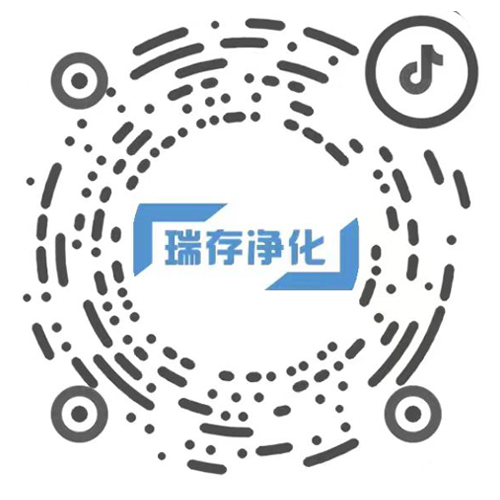News Center
Anti-static measures for clean rooms
2025/10/10
Static electricity is the product of the movement (including polarization and conduction) of electrons within or between materials. When two different materials come into contact with each other and the distance between them is less than a certain amount, such as 10-25cm, due to the tunneling effect, electrons within the two materials pass through the interface and exchange with each other. When the exchange reaches equilibrium, a certain potential difference will be generated between the materials, and equal amounts of positive and negative charges will appear on both sides of the interface. If two materials that have come into contact are separated, they will each carry an equal amount of positive and negative charges. This is the basic principle of static electricity generation.
There are mainly three ways for static electricity to be generated: frictional charging, conductive charging, and inductive charging.
Triboelectric charging: When objects made of different materials come into contact and then separate, due to the different binding capabilities of different atomic nuclei for electrons, when two substances made of different materials come into contact or rub against each other, the outer electrons will transfer to the side with greater binding capacity, causing one material to become positively charged and the other negatively charged.
Conductive charging: Because in a conductor, electrons can move freely on its surface. When in contact with a charged body, electrons will undergo charge transfer, leading to a charge balance between the two and thus forming an electrostatic phenomenon.
Induced charging: It refers to the induction of an adjacent electric field. For conductors, electrons freely move on the surface of conductive materials. If the conductor is placed in another electrostatic field, due to the repulsion of like charges and the attraction of opposite charges, positive and negative ions will transfer. The conductor will become charged due to the induction of the electrostatic field, resulting in an imbalance of positive and negative charges.
From the basic principles and methods of static electricity generation, it can be seen that in the entire production and manufacturing process of general electronic products, many procedures may generate static electricity. In the electronic manufacturing process, static electricity may be generated by operators, workbenches, tools, components and packaging, etc. As long as static electricity exists, there will definitely be an ESD (Electro-Static Discharge) process, mainly the noise produced by the induction of the circuit by the instantaneous discharge current And the discharge current causes the potential of the reference ground, such as the product ground and signal ground, to shift and fluctuate, thereby interfering with the normal operation of the circuit.
Static electricity hazards have some different characteristics from general lightning protection or electromagnetic interference.
Concealment: Generally, electrostatic discharge is not perceived by the human body, but components are damaged imperceptibly.
Potential and cumulative nature: Some components, after being damaged by electrostatic discharge, only show a decline in certain performance parameters but have not yet failed. Under continued use, it may lead to failure. Therefore, the damage caused by static electricity to components has potential.
Randomness: Electrostatic discharge damage to electronic components may occur at any stage and step from processing to manufacturing to use and maintenance of the product, and when it comes into contact with any charged human body (or object). It has a very strong randomness.
Complexity: Some electrostatic damages are also difficult to distinguish from damages caused by other reasons, leading people to mistakenly mistake electrostatic damage failure for other types of failure and make incorrect judgments.
For the assembly of electronic products, the hazards of static electricity seriously affect the quality, yield and reliability of the products. It is necessary to implement systematic anti-static measures in the clean rooms used for the assembly of electronic products to minimize the degree of static electricity hazards during the production process.
2. Electrostatic protection
Good electrostatic protection usually requires following the following three basic principles:
(1) Reduce or prevent the chance of static charge accumulation;
(2) Build a safe static discharge path;
(3) Introduce necessary and effective electrostatic monitoring equipment for system electrostatic monitoring.
2.1 A good grounding system
To reduce or prevent the accumulation of static charges and to establish a safe static discharge path, it is necessary to build a good static grounding system. Static grounding refers to the formation of an electrical circuit between an object with static electricity or an object that may generate static electricity (non-insulators) and the earth through a conductor, so that it is at the same potential level as the earth. The purpose is to accelerate the flow and leakage of static electricity, so that the static charges of charged materials can be effectively and smoothly released, thereby avoiding the accumulation of static electricity.
2.2 Environmental Control
The generation and magnitude of static electricity are closely related to environmental humidity and the concentration of ions in the air. The electrostatic potential is inversely proportional to humidity. Meanwhile, compared with ordinary environments, in places with purer air (such as dust-free workshops), static electricity is more likely to occur due to the lower ion concentration in the air.
The same action can generate electrostatic voltages that differ by more than an order of magnitude under different humidity conditions. However, it is worth noting that it is not the case that the higher the humidity, the better. Excessively high humidity can cause condensation on the equipment. Therefore, the humidity should be controlled within a reasonable range, such as 30% to 75%.
3. Electrostatic monitoring
Although high humidity can reduce the static electricity generated to a level that the human body cannot touch or sense, it is still sufficient to damage sensitive components. The correct concept is that high humidity can suppress the generation of static electricity, while low humidity does the opposite. Therefore, in response to the strict requirements for static electricity control in certain product assemblies, in addition to taking traditional static electricity protection measures, it is also necessary to monitor and record the static electricity generation links. According to the actual situation, anti-static access control systems and real-time online static electricity monitoring systems can be adopted to effectively monitor and record static electricity.
3.1 Anti-static Access control system
To achieve more effective electrostatic protection, it is necessary to control the source of static electricity from its origin. For this purpose, anti-static access control systems will be introduced in key areas. The access control system can detect whether the anti-static measures or equipment of each staff member entering the anti-static area are qualified. The system's functional modules include: identity and permission confirmation, detection of anti-static wristbands and anti-static shoes, level control board, etc.
To further ensure the effectiveness of anti-static access control, for some production enterprises that require a clean working environment, the access control system can be linked with the air shower dust removal system leading to the working area. That is, the access control signal can be integrated into the air shower door control system. By adopting this mode, it can be guaranteed that the anti-static equipment is qualified and effective from the first checkpoint of entering the working area.
3.2 Anti-static real-time Online Monitoring system
Under normal circumstances, in the general electronic manufacturing industry, electrostatic testers are usually used to test the anti-static wrists of employees. To ensure compliance with ISO9001 requirements, circles or other symbols are drawn on a form to confirm that the test has been conducted and is qualified. However, if the anti-static wrist strap of the employee fails during operation, or if a certain loop of the entire grounding system suddenly breaks abnormally or is not effectively connected, it will be very difficult to detect that the anti-static system has failed at this time. So, a certain electronics factory introduced a real-time online monitoring module into all grounding systems. By taking advantage of the integrity feature of the grounding system loop, as long as any link is open-circuited or the connection resistance value is too high (greater than 10Ω), the red light on this control panel will immediately flash. If necessary, a buzzer alarm function can also be added. The most distinctive feature of this system is real-time monitoring. The work of static electricity protection is no longer a mere formality, and there is no need to make some cumbersome and formal paper records.
4. Conclusion
Static electricity is generally "invisible and hard to touch", but it is almost everywhere and at all times. Therefore, static electricity protection is a comprehensive systematic project. In principle, static electricity protection should be carried out from two aspects: controlling the generation of static electricity and controlling the dissipation of static electricity. Controlling the generation of static electricity mainly involves controlling the process and the selection of materials in the process Controlling the dissipation of static electricity mainly involves quickly and safely releasing and neutralizing static electricity.
This article, through a brief introduction to the generation principle and hazards of static electricity, combined with practical application experience, explains the fundamental role of a good grounding system and environmental control in the static electricity protection system. It further focuses on elaborating the practical application value of the access control and online real-time monitoring system established by a certain electronics factory in static electricity protection. These two methods are simple and easy to implement, with low investment and quick results. It has certain reference and learning significance for general electronic factories in terms of electrostatic protection measures.






